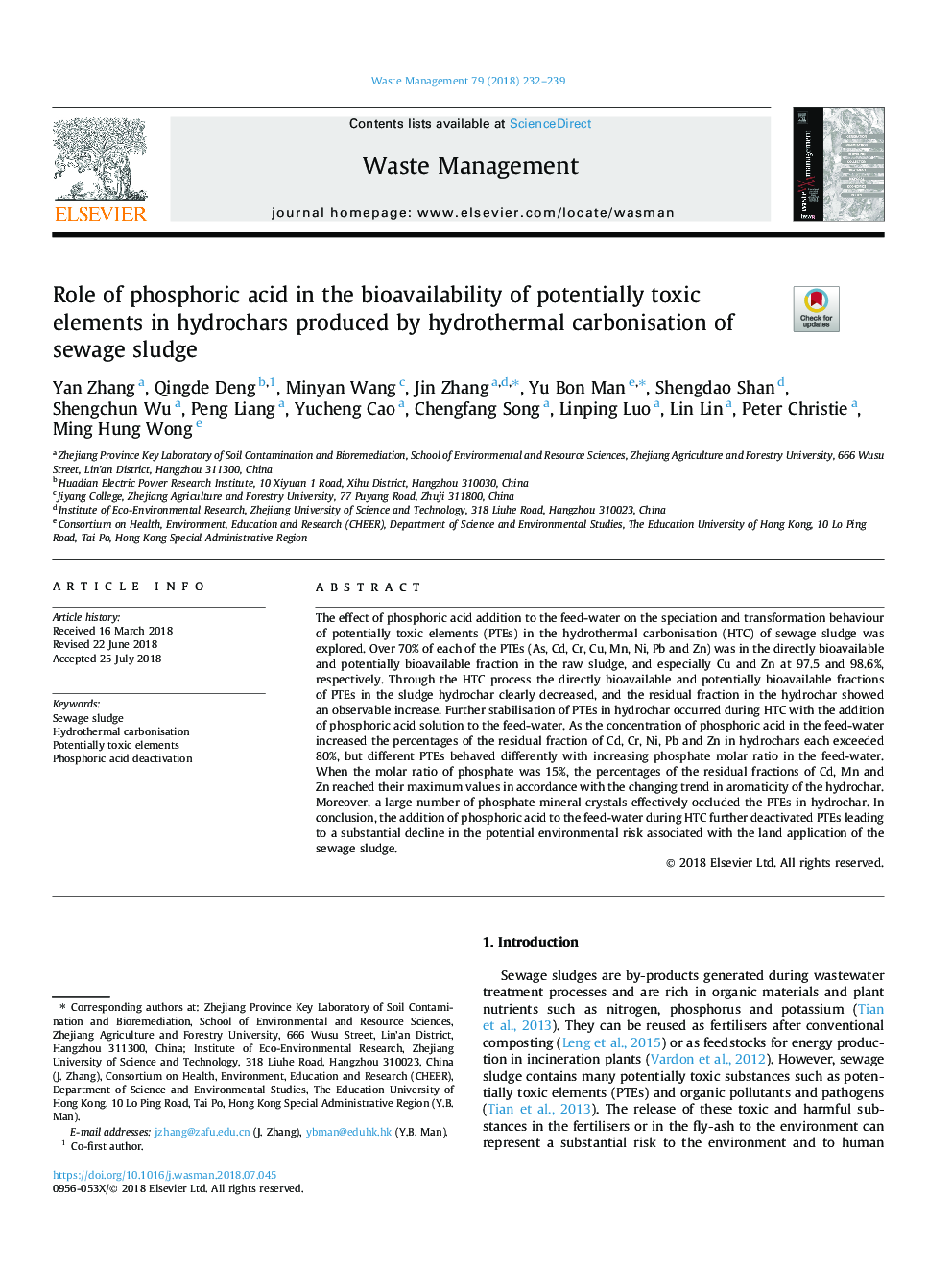| Article ID | Journal | Published Year | Pages | File Type |
|---|---|---|---|---|
| 11033311 | Waste Management | 2018 | 8 Pages |
Abstract
The effect of phosphoric acid addition to the feed-water on the speciation and transformation behaviour of potentially toxic elements (PTEs) in the hydrothermal carbonisation (HTC) of sewage sludge was explored. Over 70% of each of the PTEs (As, Cd, Cr, Cu, Mn, Ni, Pb and Zn) was in the directly bioavailable and potentially bioavailable fraction in the raw sludge, and especially Cu and Zn at 97.5 and 98.6%, respectively. Through the HTC process the directly bioavailable and potentially bioavailable fractions of PTEs in the sludge hydrochar clearly decreased, and the residual fraction in the hydrochar showed an observable increase. Further stabilisation of PTEs in hydrochar occurred during HTC with the addition of phosphoric acid solution to the feed-water. As the concentration of phosphoric acid in the feed-water increased the percentages of the residual fraction of Cd, Cr, Ni, Pb and Zn in hydrochars each exceeded 80%, but different PTEs behaved differently with increasing phosphate molar ratio in the feed-water. When the molar ratio of phosphate was 15%, the percentages of the residual fractions of Cd, Mn and Zn reached their maximum values in accordance with the changing trend in aromaticity of the hydrochar. Moreover, a large number of phosphate mineral crystals effectively occluded the PTEs in hydrochar. In conclusion, the addition of phosphoric acid to the feed-water during HTC further deactivated PTEs leading to a substantial decline in the potential environmental risk associated with the land application of the sewage sludge.
Related Topics
Physical Sciences and Engineering
Earth and Planetary Sciences
Geotechnical Engineering and Engineering Geology
Authors
Yan Zhang, Qingde Deng, Minyan Wang, Jin Zhang, Yu Bon Man, Shengdao Shan, Shengchun Wu, Peng Liang, Yucheng Cao, Chengfang Song, Linping Luo, Lin Lin, Peter Christie, Ming Hung Wong,
